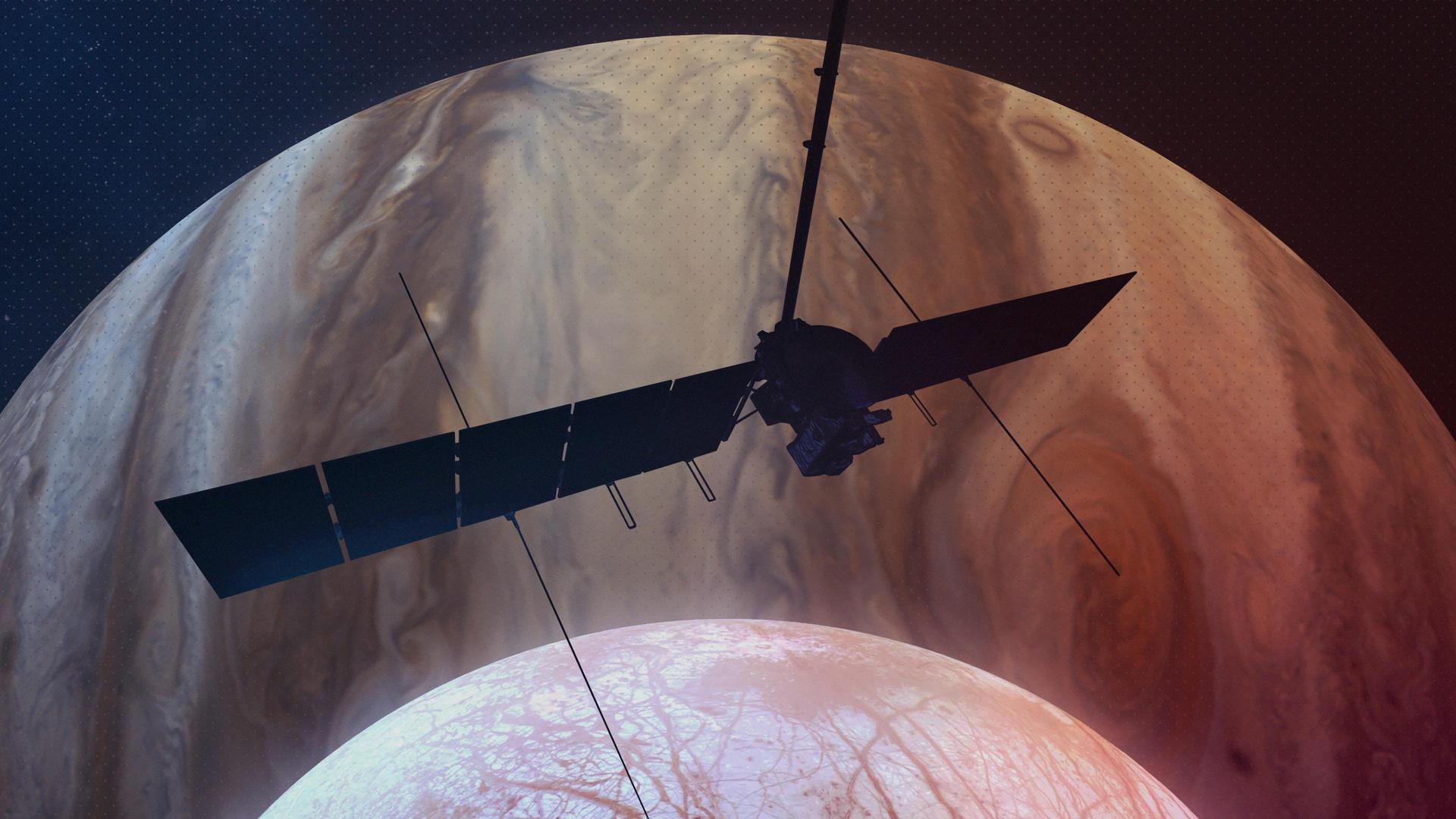
NASA’s Europa Clipper spacecraft is the largest the agency has ever built for a planetary mission. Data from previous NASA missions has provided scientists with strong evidence that an enormous salty ocean lies underneath the frozen surface of Europa. Europa Clipper will orbit Jupiter and make nearly 50 flybys of Europa to determine the thickness of the Europa’s icy shell and its interactions with the ocean below, to investigate its composition, and to characterize the moon’s geology to help scientists better understand the potential for habitable worlds beyond our planet.
Europa Clipper Spacecraft Facts
- With its solar arrays, or “wings,” deployed, Europa Clipper spans more than 100 feet (about 30 meters) — about the length of a basketball court. The huge arrays are needed to collect sunlight to power the spacecraft while it operates at Jupiter, which is more than five times as far from the Sun as Earth is.
- The spacecraft has 24 rocket engines.
- The spacecraft has nine dedicated science instruments, plus a gravity and radio science investigation.
- At launch, Europa Clipper will weigh approximately 13,000 pounds (6,000 kilograms).
- During processing, teams loaded 6,067 pounds (2,752 kilograms) of propellant into the spacecraft.
- Europa Clipper’s propulsion module is an aluminum cylinder 10 feet (3 meters) long and 5 feet wide. It holds the spacecraft’s 24 engines, fuel tanks, as well as the spacecraft’s helium pressurant tanks.
- Europa Clipper’s electronics are enclosed in a vault with walls made of 1/3-inch-thick (9.2-mm) sheets of aluminum-zinc alloy to protect the electronics from Jupiter’s intense radiation. These electronics include computers (or the “brains” of the spacecraft), flight software, and more.
- The vault plate, made of tantalum metal about 1 millimeter thick and about 7 by 11 inches (18 by 28 centimeters), is part of the structure that will protect Europa Clipper’s electronics from Jupiter’s harmful radiation. It is engraved with poetry, artwork, and other messages that pay tribute to the connection between Europa’s ocean world and our own. It also carries a dime-size microchip stenciled with more than 2.6 million names submitted by the public.
- Europa Clipper’s 10-foot-diameter (3-meter-diameter) high-gain antenna and other smaller radio antennas will be used to receive commands from Earth through NASA’s Deep Space Network, send data back to engineers and scientists and will be used for gravity and radio science investigations.
- Europa Clipper will use inertial sensors, star cameras, and special hardware to determine and control its position in space.
- Europa Clipper carries pumps that circulate fluids through pipes to all the spacecraft’s sensitive electronics, carrying heat from hot spots to cold spots. Europa Clipper also has temperature sensors, heaters, blanketing, and a radiator with louvers that can be opened to shed heat to help regulate the spacecraft’s temperature.
- Instructions on how to build paper, toy brick, and 3D-printed models of the Europa Clipper spacecraft can be found on NASA’s website.
Managed by Caltech in Pasadena, California, NASA’s Jet Propulsion Laboratory in Southern California led the development of the Europa Clipper mission in partnership with the Johns Hopkins Applied Physics Laboratory (APL) in Laurel, Maryland, for NASA’s Science Mission Directorate in Washington. The main spacecraft body was designed by APL in collaboration with NASA JPL and NASA’s Goddard Space Flight Center in Greenbelt, Maryland. The Planetary Missions Program Office at NASA’s Marshall Space Flight Center in Huntsville, Alabama, executes program management of the Europa Clipper mission. NASA’s Launch Services Program, based at Kennedy Space Center in Florida, manages the launch service for the Europa Clipper spacecraft.
